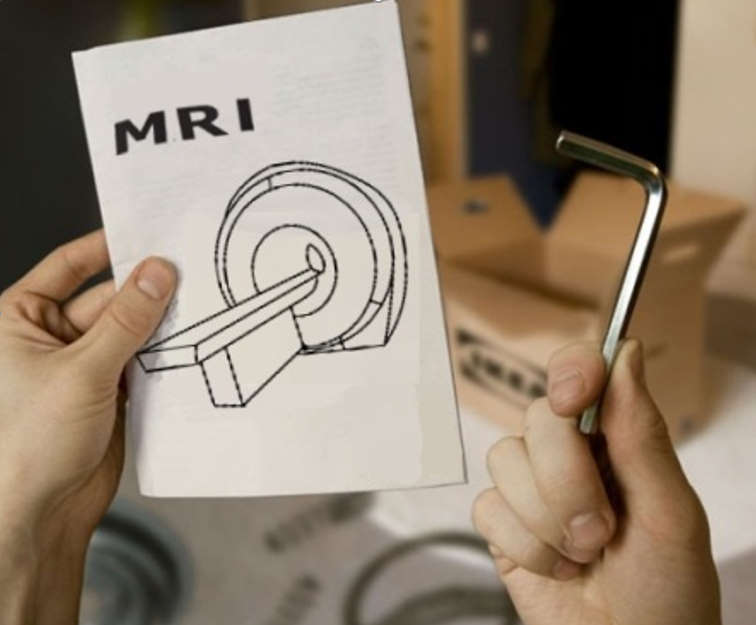After tremendous efforts in the past years of the open source scientific community, we are happily announcing that the next stage of the open source MR project is launching. Most hardware modules of low-field MR systems were successfully developed and tested and first complete MR systems were assembled already producing exciting images.


In the next stage, multiple institutions will be building the next generation of these scanners, testing, upgrading, and evaluating these systems to further improve image quality towards clinically relevant and robust results. The current material cost of such an MRI is only €10.000, which is dramatically lower compared to currently available proprietary products.
Here are some rough specifications of the system:
Magnet: Permanent magnet (no power supply needed), B0=0.05T, weight ~100kg, 30cm inner bore diameter for imaging the extremities and the head, length ~50cm
Radiofrequency (RF) power amplifier: 1kW
Gradient power amplifier: +/- 15A, 3-channel
Console, RF coils, Gradient coils, T/R Switch and low noise preamp.

We are searching for:
- Scientific institutions that want to have the next generation open source low-field MR scanners and that want to join our efforts
- Companies that want to sell open source hardware modules of this scanner
- Individuals that want to support us in hardware/software development, documentation or any other form of support
Join us on our Open Source mission to improve accessibility of MR systems globally. If you are interested to join the project, but don’t have the ressources to build a full scanner, please contact us. There are different ways how you can contribute. Also you don’t need to understand MRI fully in order to contribute to software and/or hardware. We are following a modular development approach, defining interfaces between and specifications of modules, which allows independent development that can be merged later on into a full system.
Looking forward to hearing from you (info@opensourceimaging.org)!
The Open Source Imaging Initiative (OSI²)


